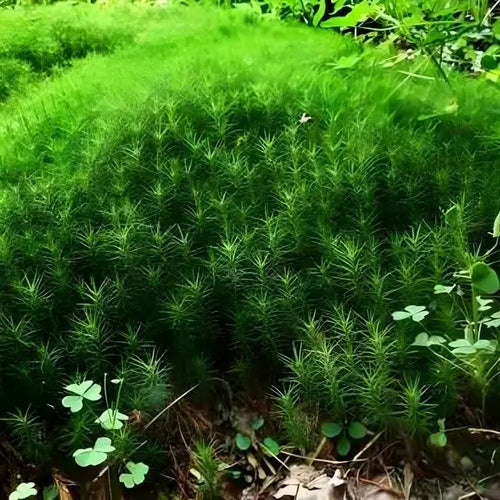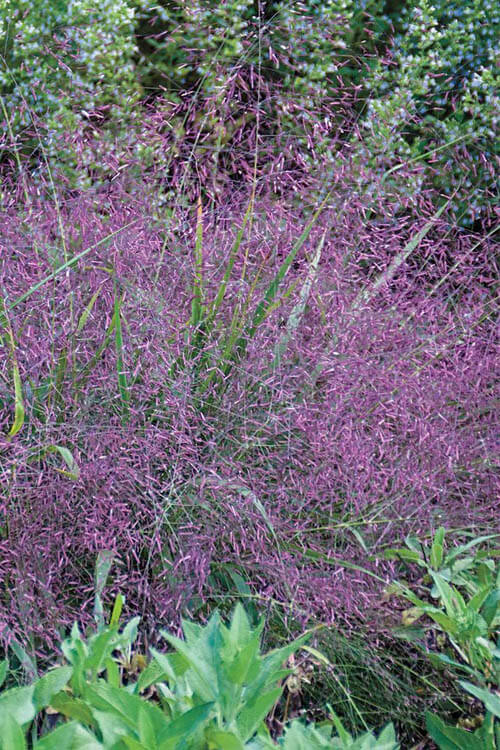Moss for Humid, Clean Air
Mosses are often overlooked in the grand tapestry of the natural world, dwarfed by the grandeur of towering trees and colorful flowers. However, these inconspicuous plants can remarkably maintain moisture and keep the air humid, making them an essential component of many ecosystems. Mosses are champions at moisture retention and play a vital role in cleaning the air and reabsorbing carbon dioxide, making them fascinating organisms worthy of our attention.
Moisture Masters
Mosses are masters of moisture management. Their ability to retain water and maintain a humid microenvironment around them is remarkable. Unlike most plants, mosses lack a proper vascular system for transporting water and nutrients. Instead, they absorb moisture directly through their leaves and stems, drawing it in from the surrounding environment. This unique adaptation allows mosses to thrive in various habitats, from the lush, rainy forests to the arid deserts. Even in the most challenging conditions, mosses can survive and contribute to the ecosystem. The moisture-holding capacity of mosses is particularly significant in dry environments, where they act as moisture reservoirs for other organisms, including insects and small animals.
Air Cleaning Agents
Mosses excel at maintaining moisture and serve as natural air purifiers. Like other green plants, mosses engage in photosynthesis, a process through which they absorb carbon dioxide from the atmosphere and release oxygen. This process is crucial for maintaining a healthy balance of gases in the air, making mosses essential contributors to the overall well-being of our planet. Furthermore, mosses are effective at capturing airborne pollutants and toxins. Studies have shown that mosses can absorb heavy metals, such as cadmium and lead, and harmful particulate matter from the air. This remarkable ability has led to exploring mosses for their potential use in urban environments to improve air quality, particularly in areas with high pollution levels.
Moss Walls: An Eco-Friendly Innovation
The unique properties of mosses have not gone unnoticed in interior design and architecture. Moss walls, also known as green or vertical gardens, have gained popularity as sustainable and aesthetically pleasing elements in homes, offices, and public spaces. These living walls often feature various moss species, each with texture and color, creating visually stunning and biophilic environments. Moss walls are more than just eye-catching decor; they also serve practical purposes. Moss acts as a natural air purifier, removing pollutants from indoor spaces and improving air quality. Additionally, moss walls help regulate indoor humidity levels, making them ideal for maintaining a comfortable and healthy environment.
Exploring Moss Diversity
Mosses are a diverse group of plants, with thousands of species found worldwide. Each moss species has its unique characteristics and ecological roles. Let's explore a few notable moss types:
1. Cushion Moss:
Cushion mosses are named for their cushion-like growth form. They often form dense, rounded tufts in alpine and subalpine environments. These mosses provide habitat and insulation for small animals and stabilize soil.
2. Sphagnum Moss:
Sphagnum mosses are renowned for their role in peat bog formation. They have a remarkable water-holding capacity and acidify the environment, creating conditions unsuitable for many competing plants. Sphagnum mosses are essential components of wetland ecosystems and carbon sinks.
3. Fern Moss:
As the name suggests, Fern mosses resemble miniature ferns. They are often found in moist woodlands and are vital to maintaining soil moisture. They add a touch of elegance to the forest floor.
4. Tree Moss:
Tree mosses, also known as epiphytic mosses, grow on the branches and trunks of trees. They contribute to the forest's overall moisture retention and serve as habitats for insects and microorganisms. Their presence adds character to forested landscapes.
5. Broom Fork Moss:
Broom fork mosses are common in temperate forests and woodlands. They form dense mats on the forest floor, aiding in moisture retention and preventing soil erosion.
6. Hedwigia Moss:
Hedwigia mosses are often found in rocky or cliffside habitats. Their compact growth form allows them to cling to the substrate and play a crucial role in stabilizing these often harsh environments.
Mosses are humble yet extraordinary plants that profoundly impact our ecosystems and indoor environments. Their moisture-retaining abilities, air-purifying qualities, and diverse forms make them invaluable contributors to the natural world. Whether you encounter mosses in a tranquil forest, a vibrant moss wall, or a rocky cliffside, take a moment to appreciate moss's remarkable and often underrated world.



















































